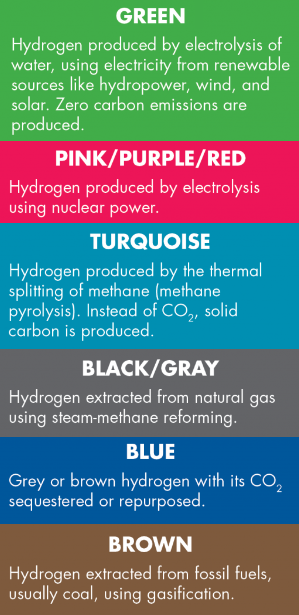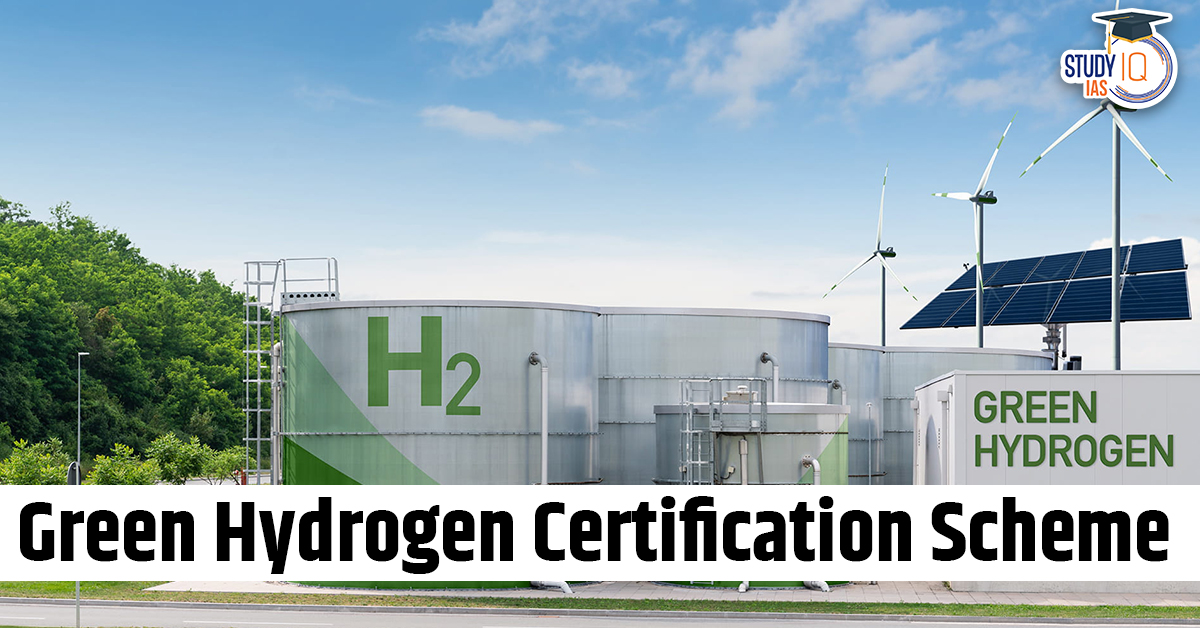Table of Contents
Context: Recently, the Union Ministry of New and Renewable Energy has launched the Green Hydrogen Certification Scheme of India (GHCI).
About Green Hydrogen Certification Scheme
- The Green Hydrogen Certification Scheme is aimed at establishing a framework to certify green hydrogen production and ensure transparency, traceability and market credibility.
- It is launched to certify that the hydrogen produced is truly green, i.e., produced from renewable sources with low emissions.
- It will prevent greenwashing (false claims of green production) and build global trust in India’s green hydrogen exports.
- Nodal agency: Bureau of Energy Efficiency (BEE)
- Two Types of certificates will be issued for GH production facilities:
- Concept certificate (voluntary)
- Facility level certificate (mandatory).
- Calculation of GHG emissions intensity for GH production shall follow the MNRE Green Hydrogen Emission Calculation Methodology.
- The certificate is non-transferable or tradeable and cannot be claimed for any emission reduction credits.
| Definition of Green Hydrogen (as per Indian standard) |
|
Green Hydrogen Mission
- Green Hydrogen Mission was approved by the Union Cabinet in 2023.
- Nodal Ministry: Ministry of New and Renewable Energy (MNRE)
- Scheme Implementation agency (SIA): National Institute of Solar Energy (NISE).

Key Objectives
- Develop a green hydrogen production capacity of 5 million metric tonnes (MMT) per year by 2030.
- Reduce dependency on fossil fuel imports.
- Promote export of green hydrogen and its derivatives (e.g. green ammonia).
- Decarbonise sectors such as steel, fertilisers, refining, shipping, and heavy-duty transport.
Major Components
- SIGHT Programme: Under this, two distinct financial incentive mechanisms will be provided, targeting domestic manufacturing of electrolysers and production of Green Hydrogen.
- Strategic Hydrogen Innovation Partnership (SHIP): A public-private partnership framework for R&D will be facilitated under the Mission.
Export Hubs
To facilitate exports, three international ports have been chosen as green hydrogen hubs:
- Kandla (Gujarat), Paradip (Odisha) & Tuticorin (Tamil Nadu).


 Mukhyamantri Majhi Ladki Bahin Yojana, O...
Mukhyamantri Majhi Ladki Bahin Yojana, O...
 PM MITRA Parks, Objectives, Key Features...
PM MITRA Parks, Objectives, Key Features...
 Rashtriya Gokul Mission (RGM), Objective...
Rashtriya Gokul Mission (RGM), Objective...

























